Japanese / English
Graduate School of Environment, Life, Natural Science and Technology
Laboratory of Animal Nutrition
NISHINO's Projects
|
|
Nutrition and health management of dairy and beef cattle
|
Despite continued advances in veterinary medicine, feeding management, and hygienic practice, mastitis has been a significant problem in the dairy
industry. Cows of an improved breed produce 30-40 kg of milk per day; hence, recovery from the damage incurred by milking should be a difficult task. If the
closure of teats is imcomplete, pathogenic microorganisms can enter. Because mastitis is an infectious disease, the relationships between pathogenic
(microorganisms), environmental (cowshed), and host (nutritional status, immune function, teat shape, etc.) factors need to be clarified for prevention. |
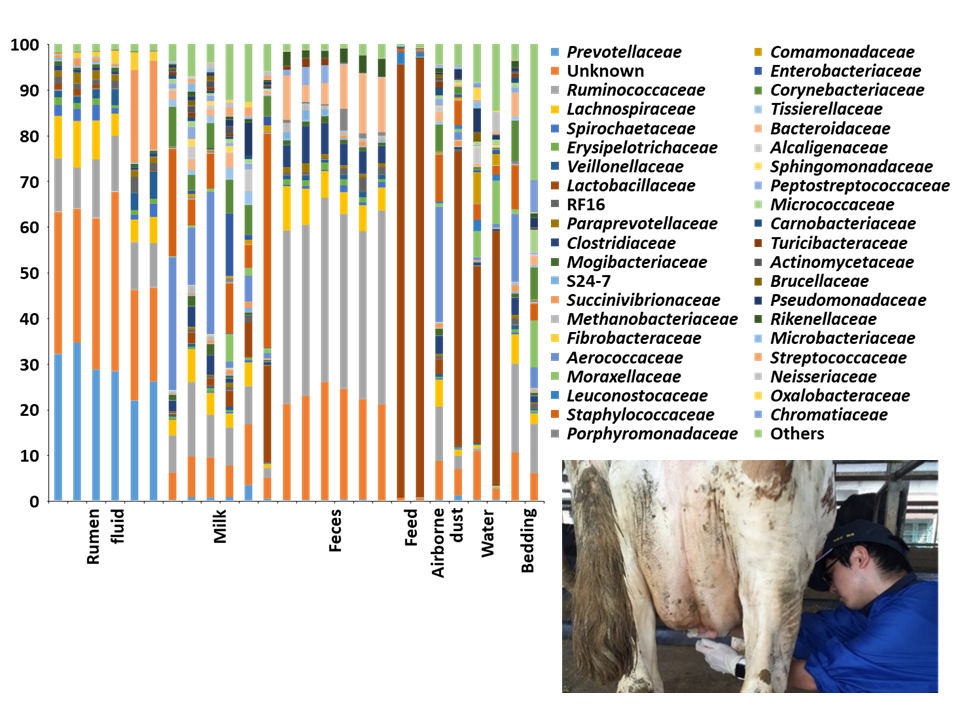
|
| |
The pathogenic agents of mastitis are contagious and environmental. Contagious mastitis is transmitted through the farmers' hands and milking equipment,
and environmental mastitis is caused by pathogens that enter the udder through feces and beddings. However, the causative organism is unknown (not culturable in
traditional media) for about one-quarter of mastitis cases.Using a high-throughput MiSeq analysis, we will figure out pathogens and infection routes that have
not been clarified so far. We investigate the association of nutritional status and immune functions of dairy cows as well.
|
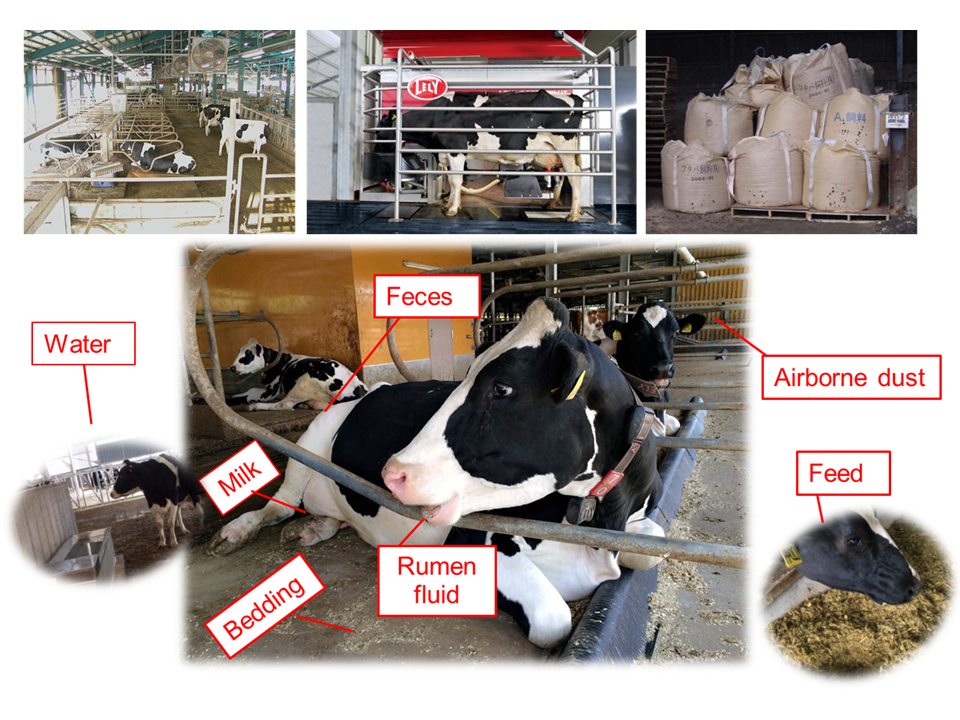
|
Quality and functional assessment of animal products -from farm to table approach-
|
|
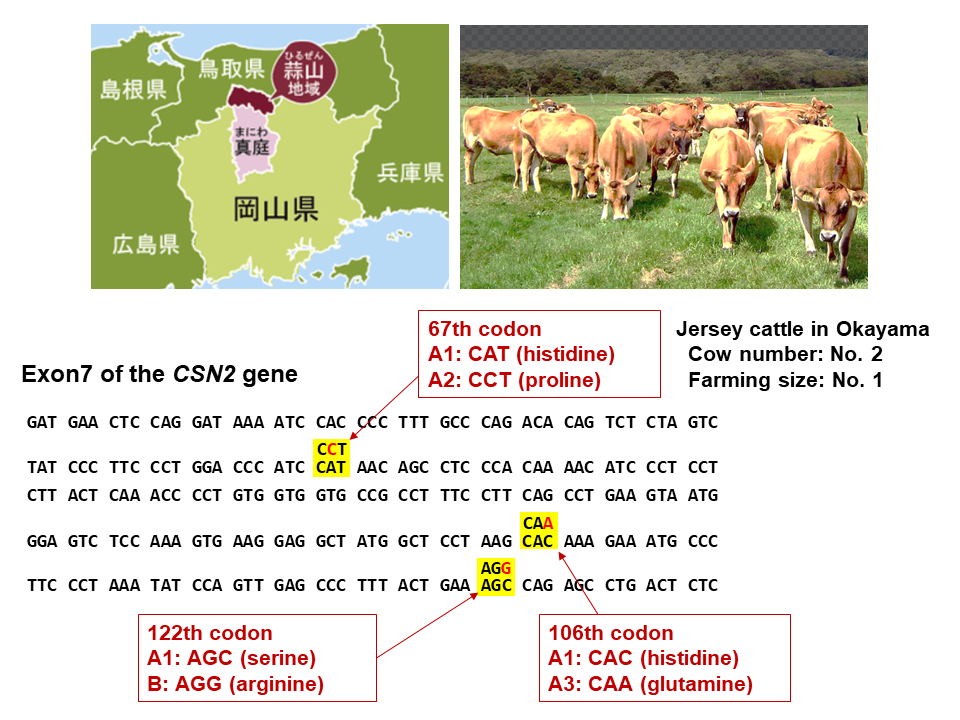
|
Have you heard A1 milk and A2 milk? Although there is controversy about the role of A1 β-casein in gastrointestinal inflammation
and digestive discomfort, the global market of A2 milk, which does not contain A1 β-casein, continues to grow. A2 milk can be produced by gathering cows with the
CSN2 gene of A2A2 genotype. The Holstein breed is much with A1A1 and A1A2, and it is not easy to gather cows with A2A2. However, the Jersey breed has a high
percentage of A2A2. The Hiruzen area of Okayama Prefecture is a place to produce Jersey breed.
|
| |
|
|
The problem of A1 β-casein has been attributed to the BCM-7, a proline-rich peptide produced by the action of digestive enzymes.
In yogurt and cheese, concerns about A1 milk could be minimized, because lactic acid bacteria used as starters for fermented dairy products may have enzymes (DPP-4
family) that hydrolyze such proline-rich peptides. We diagnose the CSN2 gene of the Jersey cows with local industry. Likewise, we evaluate the function of
A1 milk, A2 milk, A1 yogurt, and A2 yogurt using mice.
|
Wildlife management and nutrition and health of companion animals
|
Large-breed dogs, particularly Siberian huskies, are more prone to soft stools. If food is not correctly chosen, they may exhibit diarrhea and vomiting.
We have shown that Siberian huskies have a substantially high percentage of Lactobacillus than small-breed dogs. Likewise, Lactobacillus coleohominis
was characteristically lacking in Siberian huskies. We will isolate Lactobacillus coleohominis from small-breed dogs to evaluate the effects on stool
characteristics, gut microbiota, and gut inflammation.
|
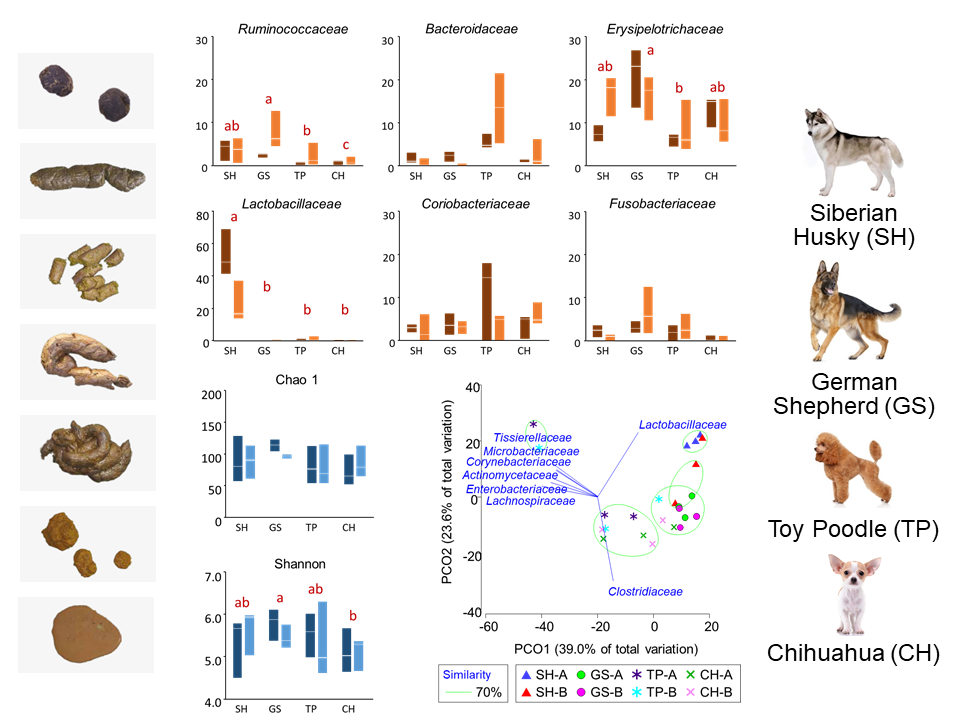
|
| |
Wild deer and boar cause severe damage to agriculture, and Okayama Prefecture tries to halve the population by 2023. We examined the blood metabolites and
fecal microbiota of wild deer captured in northern Okayama Prefecture. The phylogenetic relationship based on mitochondrial DNA was also examined. The finding that
plasma Ca concentration was low in winter may be related to the behavior of wild deer licking snowmelt (CaCl2) in winter. We will continue this field survey to
figure out appropriate population management and reduce damage to agriculture and forestry.
|
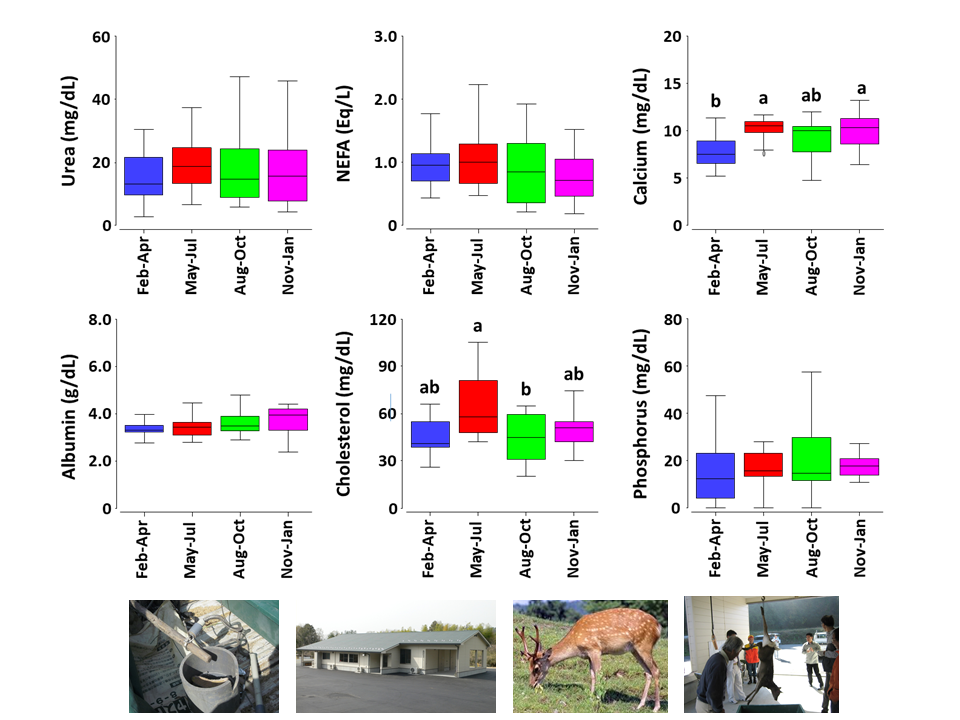
|
|
|
|
© Laboratory of Animal Nutrition. All rights reserved.
|
|